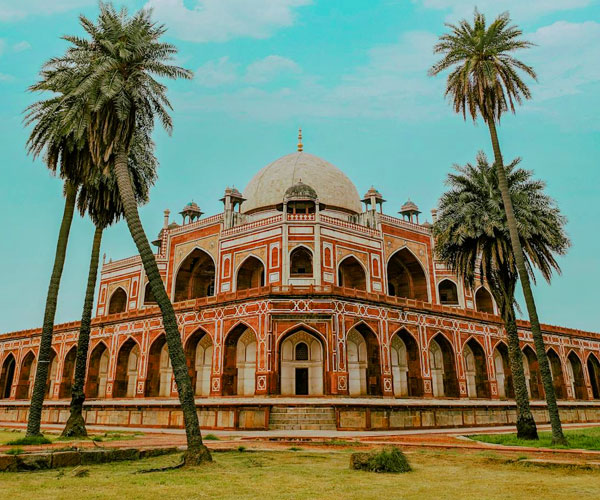
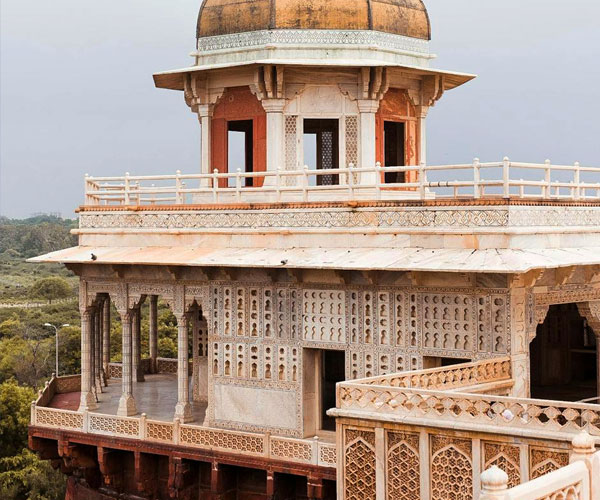
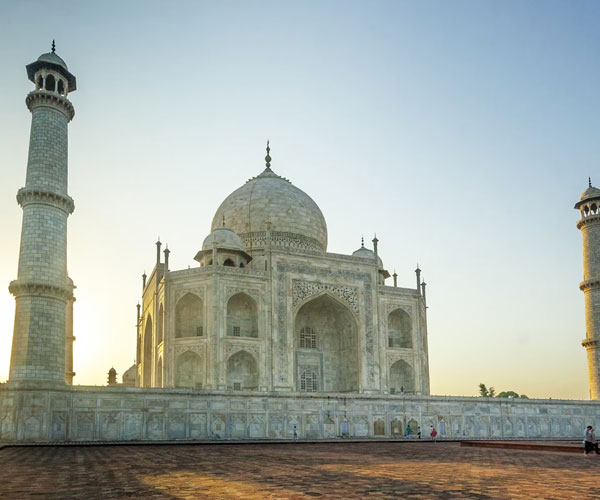
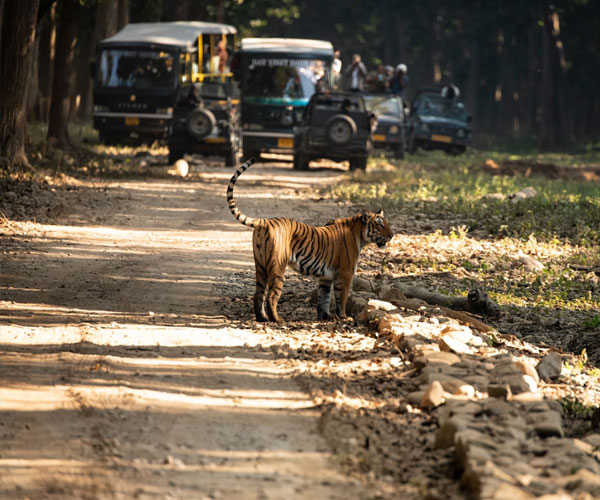
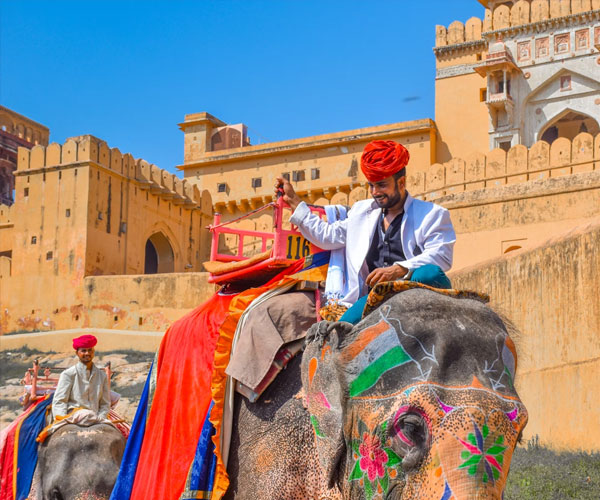
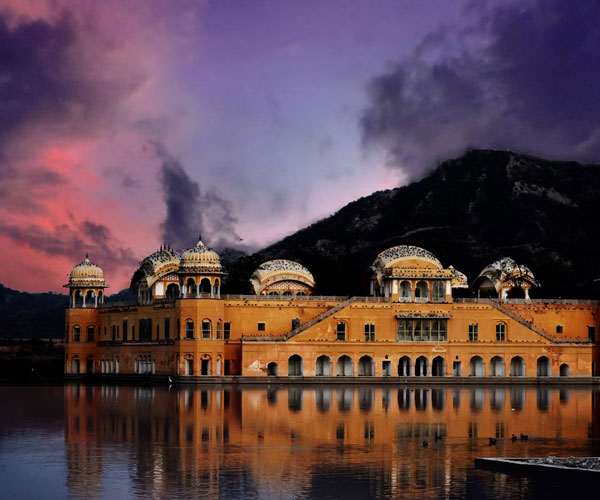
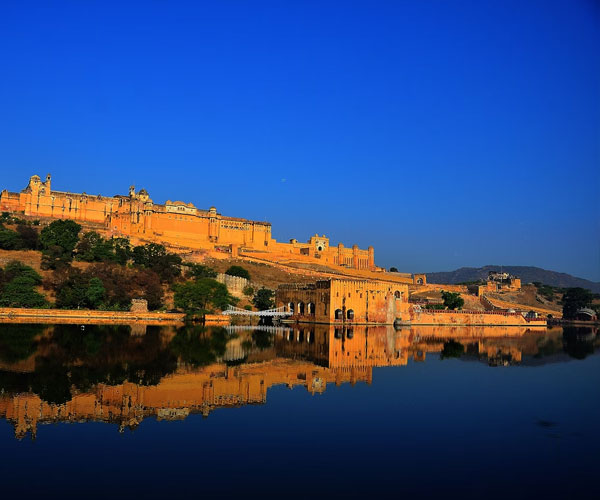
Golden Triangle Tour With Tiger Safari
- Destinations:- Delhi night 2 / Agra 1 night / ranthambore 2 night / jaipur 2 night
- 08 Days - 07 Nights
Experience the essence of India by exploring its three iconic historical cities—Delhi, Agra, and Jaipur—combined with an exhilarating visit to Ranthambore National Park. This well-curated Golden Triangle tour offers a perfect blend of cultural heritage and natural wilderness, ideal for those seeking a comprehensive introduction to India. Discover the architectural grandeur and historical significance of Delhi, the timeless beauty of the Taj Mahal in Agra, and the royal charm of Jaipur. In addition to these celebrated destinations, the itinerary includes a memorable excursion to Ranthambore, one of India’s most renowned national parks, home to majestic tigers and diverse wildlife. Enjoy a thrilling jeep safari through the lush landscapes of the park, immersing yourself in the serene beauty of nature. Designed thoughtfully to ensure comfort and leisure, this itinerary allows you to unwind and explore at a relaxed pace, offering a perfect escape from your routine. Let this journey be your window into India’s vibrant past and wild heart, all within a single unforgettable tour.
Discover Delhi’s historic landmarks: Qutub Minar, India Gate, and Humayun’s Tomb
Visit the magnificent Taj Mahal and Agra Fort in Agra
Explore Jaipur’s royal treasures: Amber Fort, Hawa Mahal, and City Palace
Experience thrilling tiger safari in Ranthambore National Park or Kanha National Park
Enjoy vibrant culture, traditional cuisine, and bustling markets in all cities
Day 1: Arrival in Delhi
Upon your arrival in Delhi, you will be warmly welcomed by our tour representative, who will assist you with a comfortable transfer to your hotel. After completing the check-in formalities, take some time to relax and refresh in your room. Later, embark on a guided sightseeing tour of Delhi, exploring prominent landmarks such as the serene Bangla Sahib Gurudwara, the architectural marvel of the Lotus Temple, the iconic India Gate, and other significant attractions. Delhi, the capital of India, beautifully reflects the grandeur of its historical legacy alongside its vibrant modernity. With its rich cultural tapestry and countless monuments, the city offers an engaging experience that captivates every traveler. After a fulfilling day of exploration, return to your hotel for an overnight stay.
Day -2: Delhi Local Sightseeing
After enjoying a hearty breakfast at the hotel, proceed for a full-day guided tour of Delhi’s most celebrated historical and cultural landmarks. Begin with a visit to Qutub Minar, the tallest brick minaret in the world. This remarkable structure, consisting of five distinct stories adorned with intricate carvings and verses from the Qur'an, is a striking example of Indo-Islamic architecture. Continue to Humayun’s Tomb, a magnificent 16th-century mausoleum set amidst symmetrical gardens. Constructed using red sandstone and white marble, this architectural marvel inspired the design of the iconic Taj Mahal. Both of these monuments are recognized as UNESCO World Heritage Sites. Next, explore the stunning Akshardham Temple, a masterpiece of contemporary temple architecture, known for its spiritual atmosphere and intricate craftsmanship.
In the afternoon, discover the vibrant charm of Old Delhi. Enjoy shopping in Chandni Chowk, one of the oldest and busiest markets in India, offering a rich assortment of textiles, spices, and traditional wares. Visit Raj Ghat, the serene memorial dedicated to Mahatma Gandhi at the site of his cremation, followed by Jama Masjid, one of the largest and most impressive mosques in the country. Return to the hotel by evening and enjoy a comfortable overnight stay.
Day 3: Delhi to Agra – Exploring Mughal Grandeur
Begin your day with a generous breakfast at the hotel. Afterward, embark on a comfortable drive to Agra via the Yamuna Expressway, a modern and well-maintained highway that ensures a smooth journey of approximately three hours. Upon arrival in Agra, check in at the hotel and take some time to relax and refresh. Later, proceed for a guided exploration of Agra’s remarkable Mughal heritage. Your first stop is the majestic Agra Fort, also known as the Red Fort of Agra, a UNESCO World Heritage Site. Commissioned by Emperor Akbar in 1565 and later enhanced by his successors—Emperors Jahangir and Shah Jahan—the fort is an architectural marvel of red sandstone. Within its fortified walls lie impressive structures such as the Diwan-i-Khas (Hall of Private Audience) and the Diwan-i-Am (Hall of Public Audience). The fort bears silent testimony to the rise and fall of the Mughal Empire and offers a compelling glimpse into its royal past. Continue to the Tomb of Itimad-ud-Daulah, an exquisite marble mausoleum commissioned by Empress Noor Jahan in memory of her father, Mirza Ghiyas Beg. Often referred to as the “Baby Taj,” this elegant monument is admired for its intricate marble inlay work, delicate carvings, and graceful proportions. It is widely considered a precursor to the Taj Mahal in both design and craftsmanship. In the evening, visit Mehtab Bagh (Moonlight Garden), located across the Yamuna River. This serene garden provides a breathtaking view of the Taj Mahal at sunset, offering a picture-perfect moment as the monument glows in the changing hues of twilight. Return to your hotel and enjoy an overnight stay in Agra.
Day 4: Sunrise at the Taj Mahal – Drive to Ranthambore via Fatehpur Sikri
Begin your day early with a sunrise visit to the magnificent Taj Mahal (closed on Fridays), one of the most iconic monuments in the world. Commissioned by Emperor Shah Jahan between 1631 and 1653 in loving memory of his wife Mumtaz Mahal, this UNESCO World Heritage Site stands as an eternal symbol of love. Admired globally for its flawless white marble architecture, intricate carvings, and perfect symmetry, the Taj Mahal is a masterpiece that captivates every visitor with its timeless beauty, especially during the tranquil hours of dawn.After your visit, return to the hotel for breakfast and a brief period of rest and refreshment. Lter, check out from the hotel and proceed towards Ranthambore National Park, a renowned wildlife sanctuary in Rajasthan known for its tiger population and scenic beauty. En route, stop to explore the historic city of Fatehpur Sikri, another UNESCO World Heritage Site. Built by Emperor Akbar in the 16th century, this former Mughal capital is an architectural gem that includes notable structures such as Buland Darwaza, Jama Masjid, Panch Mahal, and Tomb of Salim Chishti. The city was eventually abandoned due to water scarcity but remains a significant example of Mughal planning and craftsmanship.
After the visit, continue your drive to Ranthambore. Upon arrival, check in at the hotel and relax. Overnight stay in Ranthambore.
Day 5: Wildlife Safaris in Ranthambore National Park
Begin the day early as you leave the comfort of your hotel for an exciting morning wildlife safari in Ranthambore National Park. Explore the rich biodiversity of this renowned reserve, where various species of flora and fauna thrive in their natural habitat. With a bit of luck and patience, you may witness the majestic Tiger roaming freely across the rugged terrain—an exhilarating and unforgettable experience. After the safari, return to the hotel to enjoy a hearty breakfast and take some time to relax.
In the afternoon, prepare for a second safari experience, offering another opportunity to explore the park’s vast wilderness. The changing light and landscape in the evening create a different perspective and enhance the chances of spotting wildlife. Recognized as one of India's most prestigious wildlife sanctuaries, Ranthambore was once the royal hunting ground of the Maharajas of Jaipur. The park is also noted for its historical significance, featuring the impressive Ranthambore Fort and several ancient ruins scattered throughout the area, giving it the unique distinction of being both a natural and cultural heritage site.
After a day of thrilling encounters and scenic beauty, return to the hotel for a restful overnight stay in Ranthambore.
Day 6: Ranthambore to Jaipur – Arrival and Local Exploration
After enjoying a delicious breakfast at the hotel, proceed on a scenic road journey from Ranthambore to Jaipur, the vibrant capital of Rajasthan. Fondly known as the “Pink City,” Jaipur is renowned for its rich cultural heritage, warm hospitality, architectural splendors, and colorful traditions. The city offers a fascinating blend of history and modernity, making it one of India’s most captivating destinations. En route, visit Galta Ji, popularly known as the Monkey Temple—an ancient Hindu pilgrimage site located approximately 10 kilometers from Jaipur. Set amidst the picturesque Aravalli Hills, this sacred temple complex is known for its natural springs, holy water tanks, intricately designed pavilions, and the large number of monkeys that reside there, adding a unique charm to the experience. Upon arrival in Jaipur, check in at your pre-booked hotel and take some time to relax and unwind after the journey.
Later in the day, set out for a brief orientation tour and explore Jaipur’s local handicraft markets, which are world-famous for their exquisite block printing, traditional Rajasthani attire, and precious and semi-precious gemstone jewelry. The city is a haven for artisans and offers a wonderful opportunity to witness traditional craftsmanship and shop for authentic souvenirs.
Return to the hotel in the evening to rest and prepare for a full day of sightseeing in Jaipur. Overnight stay at the hotel.
Day 7: Full-Day Jaipur Sightseeing
After enjoying a delightful breakfast at the hotel, set out for a full-day exploration of the majestic city of Jaipur, renowned for its royal heritage and architectural brilliance.
Begin with a visit to the Amber Fort, a stunning hilltop fortress nestled amidst the rugged Aravalli Hills. This grand structure, built from red sandstone and marble, offers panoramic views and houses exquisite palaces, courtyards, and temples. Within the fort lies the famed Sheesh Mahal (Mirror Palace), adorned with intricate mirror work that reflects light in mesmerizing patterns, creating a dazzling effect .later visit Perched on the edge of the Aravalli Hills, Nahargarh Fort stands as a majestic sentinel overlooking the city of Jaipur. Built in 1734 by Maharaja Sawai Jai Singh II, the founder of Jaipur, the fort was originally constructed as a retreat and a defensive stronghold to protect the city. Next, Jal Mahal – The Serene Water Palace of Jaipur Situated gracefully in the middle of the Man Sagar Lake, Jal Mahal—meaning "Water Palace"—is one of Jaipur’s most picturesque and iconic landmarks. This architectural marvel combines elements of Mughal and Rajput styles, showcasing a harmonious blend of elegance and symmetry. visit the iconic Hawa Mahal, or Palace of the Winds. This distinctive five-storied pink sandstone façade, with 953 intricately carved windows, was designed to allow royal ladies to observe street festivities without being seen, while also facilitating natural ventilation throughout the palace. Proceed to the magnificent City Palace, a symbol of Jaipur’s regal past. Enclosed within massive walls, the palace complex is a fine blend of Mughal and Rajput architecture, featuring grand halls, courtyards, and ornate gateways. Its richly decorated interiors showcase the opulence and elegance of the royal family. Conclude your sightseeing with a visit to Jantar Mantar, a remarkable UNESCO World Heritage Site. This astronomical observatory, built by Maharaja Sawai Jai Singh II, houses a collection of architectural instruments designed to measure celestial phenomena and time with incredible accuracy.
After a culturally enriching day, return to the hotel for a restful overnight stay in Jaipur.
Day 8: Jaipur to Delhi by Road – Departure
Begin your final day with a delightful breakfast at the hotel. After check-out, prepare for your return journey as you travel by road back to Delhi, a comfortable drive through the well-connected national highway. Upon arrival in Delhi, you will be transferred to the airport or railway station for your onward journey or homebound flight/train, carrying with you cherished memories of an unforgettable tour through India’s cultural and natural heritage.
Inclusions
✔ Private, uniformed chauffeur
✔ Live tour guide fluent in multiple foreign languages
✔ Monument entry fees (if selected option)
✔ Sightseeing by air-conditioned private car or tempo traveller
✔ Pickup and drop-off at Delhi Airport, railway station, or preferred location
✔ All parking fees, tolls, fuel, interstate taxes, and driver allowances covered
✔ 3-star or 5-star hotel accommodation with breakfast (if selected option)
Exclusions
❌ Personal expenses not specified in the package
❌ Any activities not listed under inclusions.
